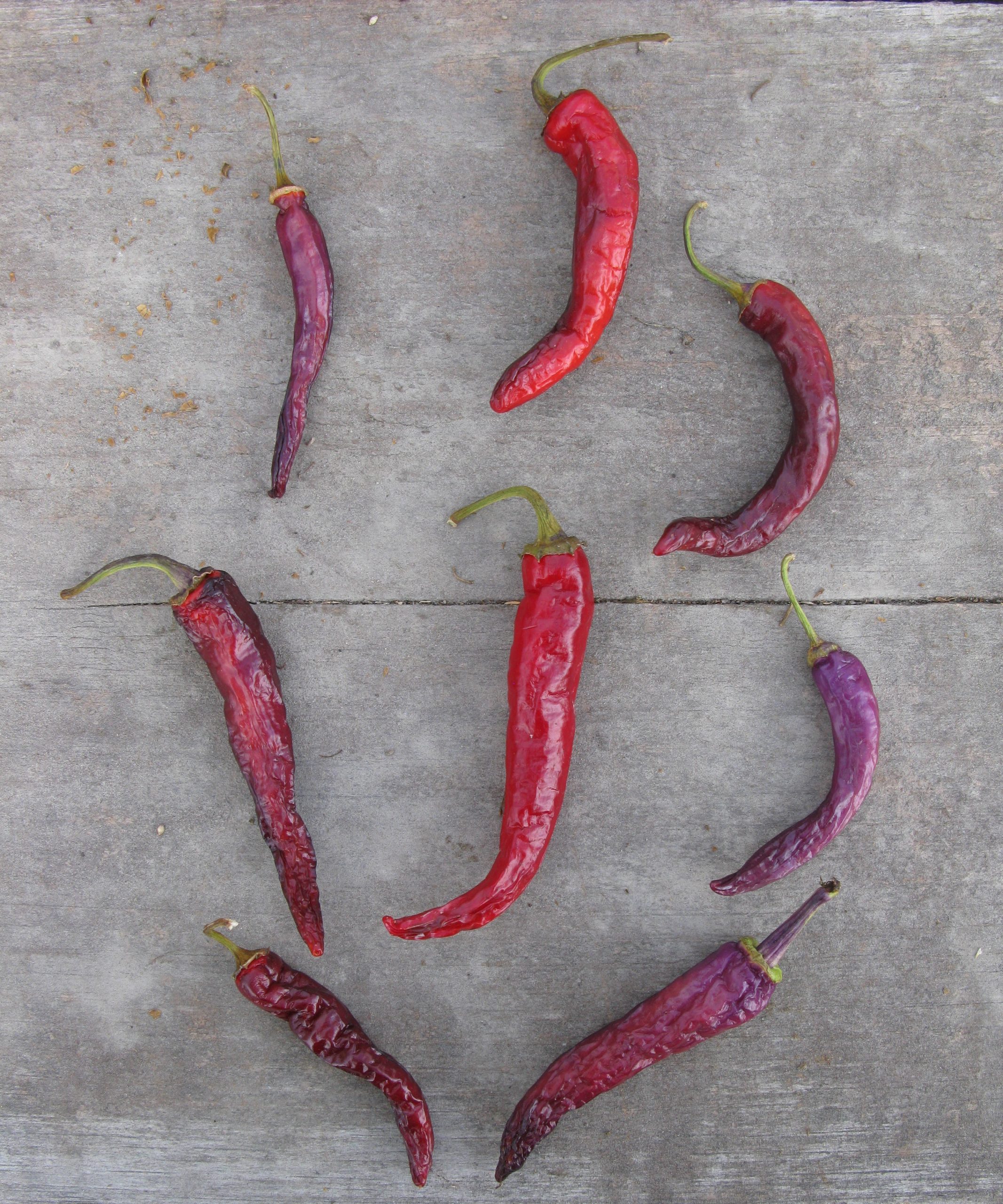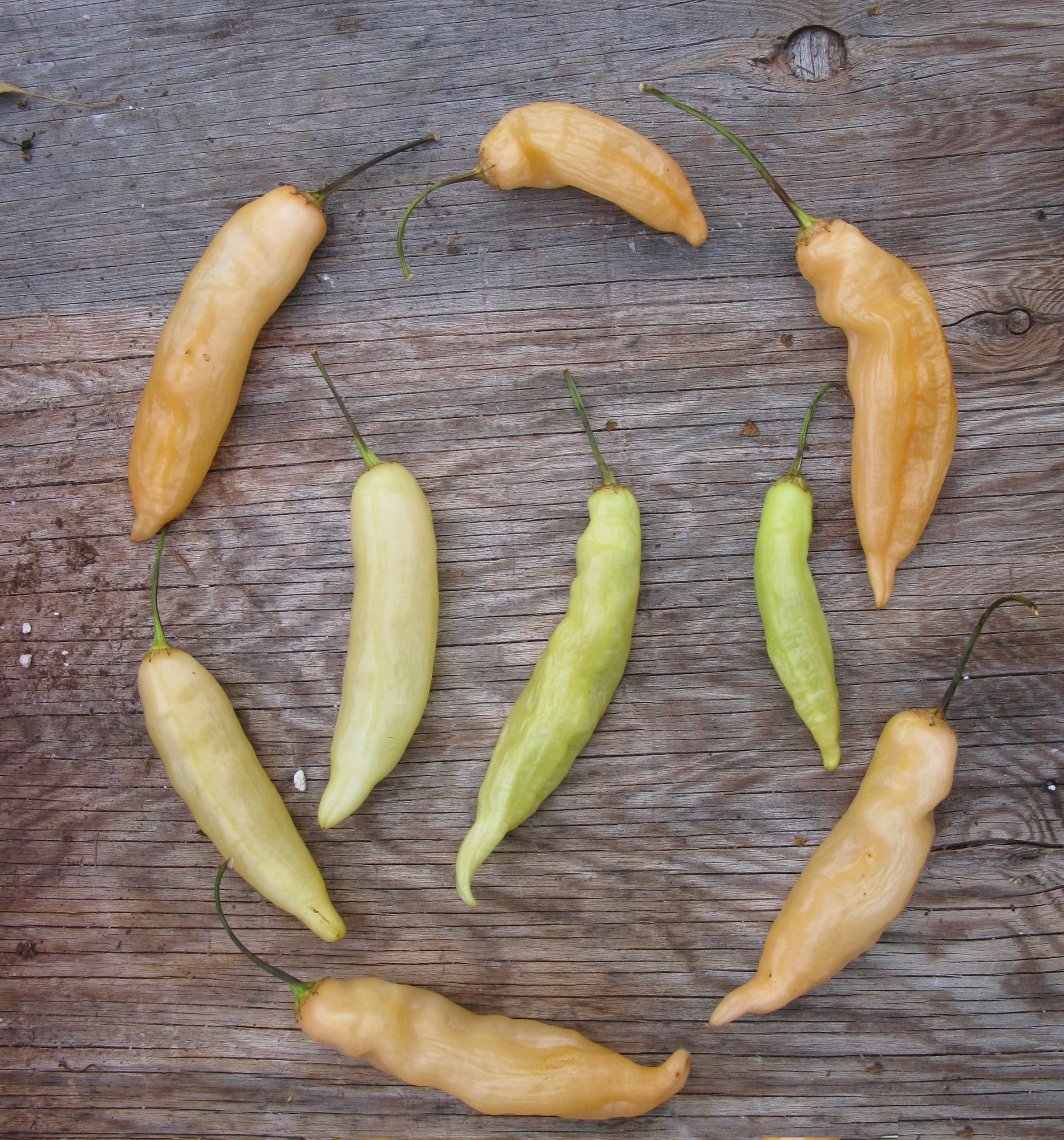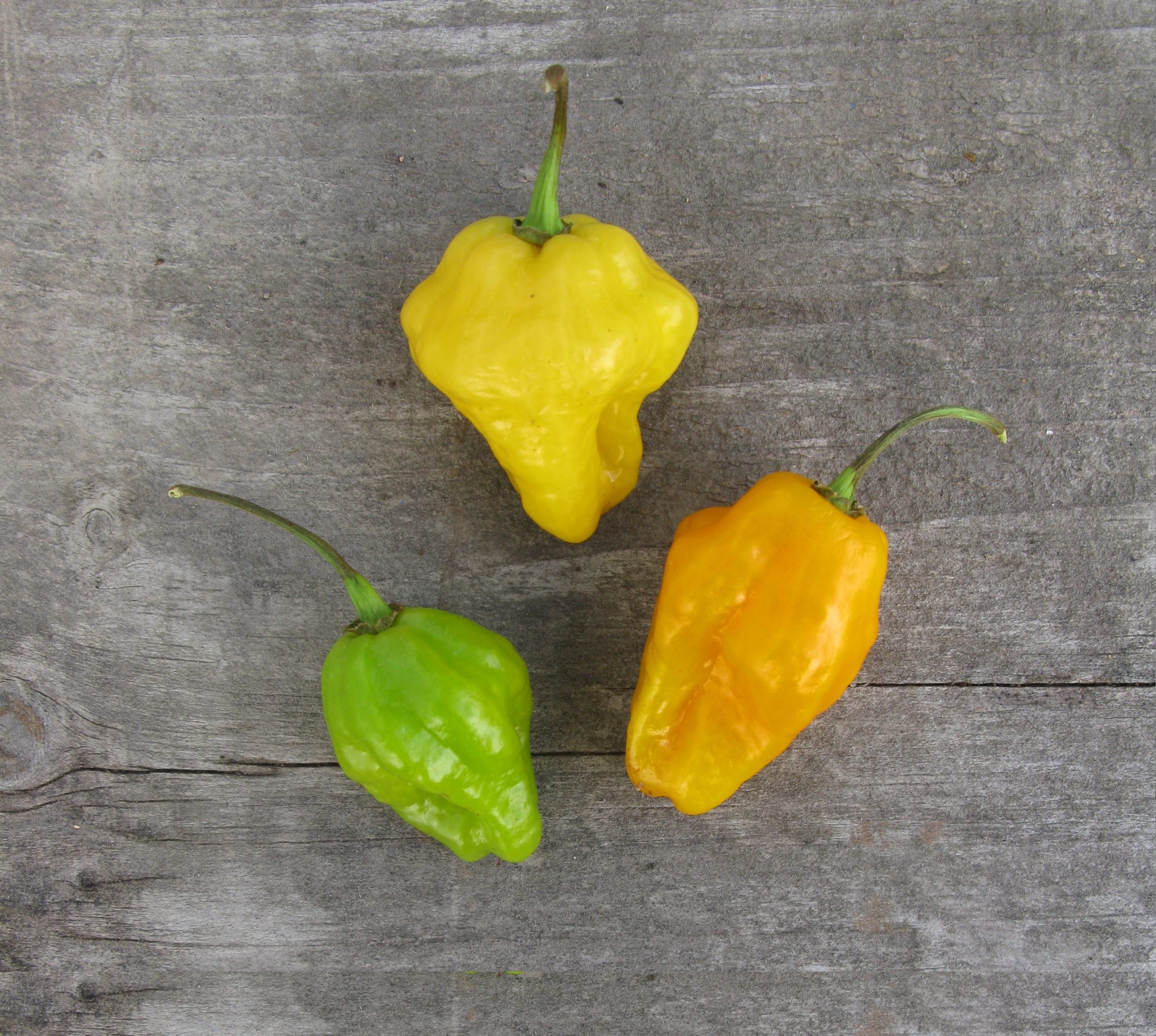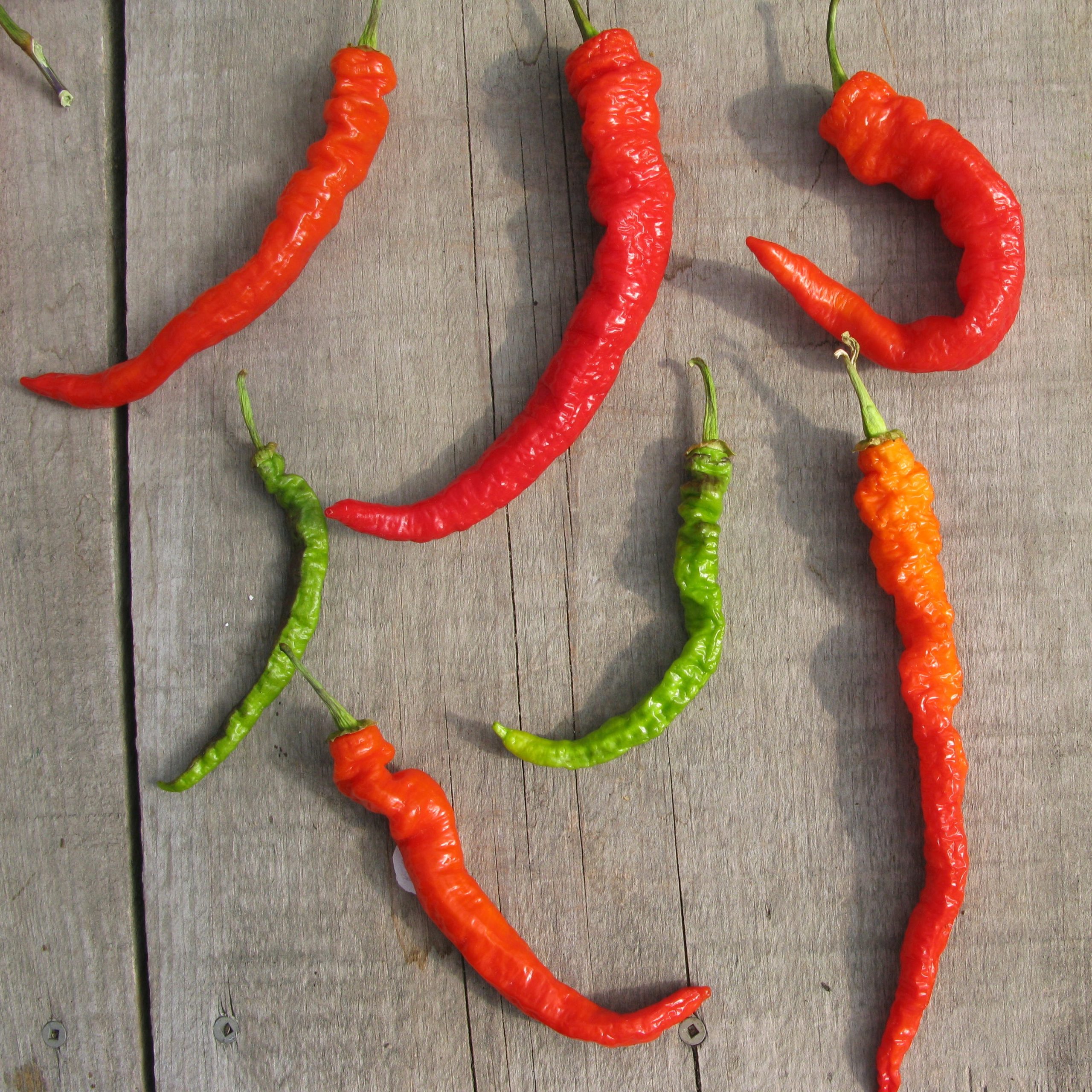There’s something about hot peppers that collect stories. Perhaps it is because their different flavours and uses are special ingredients in different, often regional, dishes and these make people think of ancestral place or important person. Maybe its the bravado of a food that bite’s back. Hot peppers originated in the warmer regions of the americas but spread quickly to other regions of the world. People selected their favourite characteristics as people do. This selection continues to this day in farms and gardens.

Buena Mulata Hot Pepper is a beautiful long and pointed pepper that starts out purple goes through a brown phase before becoming bright red. It is said that African America painter Horace Pippin shared it with the grandfather of well known seed saver William Woys Weaver.
To contrast this heritage variety, here are two modern creations. The first is Sugar Rush Peach, selected by Chris Fowler of Wales who makes hot sauces. Unlike many (not all) peppers, it’s species is baccatum rather than annum. I’ve grown this citrusy, crisp little pepper and found it a hardy, productive plant.

Closer to home is Carrot Bomb, a selection by Dan Brisebois of Tournesol Cooperative Farm in Quebec, from Bulgarian Carrot that is round rather than long. This, he says, makes it great for pickling!
It should surprise no one that most hot peppers are indeed hot but there are two on this list that are a little surprise. The first is the Spanish heirloom Padron. It has the amusing quality of ‘mostly’ being mild but occasionally being spicy. In other words, you never quite know what you are going to get.
There’s also heatless habanero Trinidad Perfume that has all the flavour notes of a good hab but without the fire.

Let us not forget some fun selections like decorative Little Blue that is a great little decorative and tasty pepper or Chinese Dragon Cayenne Pepper which can grow 10 inches long and retains its colour while drying. If you like dried pepper rista chains, there’s also Golden Cayenne pepper.

From Jalapeño poppers to Sweet Paprika, peppers make dishes special. We’d be delighted to share your pepper stories.
Hot Pepper Growing Tips
- Pepper seed germination will be helped by heat. Try the warm baggie method. Place your pepper seeds onto a paper towel, moisten then seal in a plastic freezer bag. Place on a heating vent or some other warm location. Check daily. This will speed up germination. New seeds of the annum species often germinate within days. Rarer species or older seeds may take longer, up to a week or more. Plant immediately when you see roots.
- Start your plants about 8 weeks before planting out. You may see flowers at planting time. It’s up to you whether to pinch these. I never have but some people swear by this method.
- Choose short season varieties for the Ottawa climate and grow in a warm, sunny place. This is one plant that you’ll see a big difference in performance when grown in full sun.
- They can be grown in large pots but dwarf varieties will do best in that situation.
- Peppers are decorative and do well interplanted in a warm sunny garden. Make sure you give them plenty of room if they are planted among established perennials as they will be crowded both in the leaf and root zone.
- Hot peppers who experience drought, are in my experience, even hotter so use that information wisely.